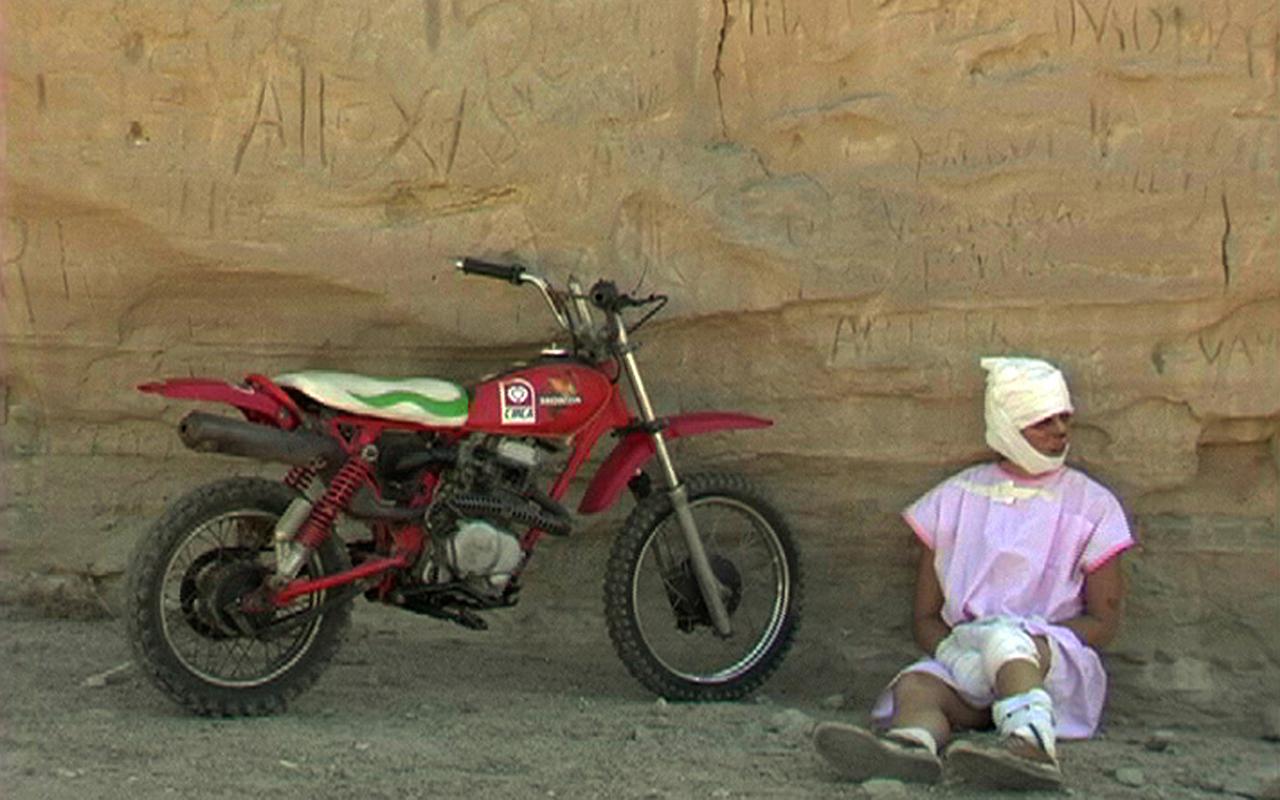Stanya Kahn’s Communication Breakdown
At the Institute of Contemporary Art, Los Angeles, the artist’s trio of short films explore the boundaries of language
At the Institute of Contemporary Art, Los Angeles, the artist’s trio of short films explore the boundaries of language

Stanya Kahn’s current outing at ICA Los Angeles consists of just three filmic works produced over a ten-year span. Anyone hoping to grapple with a greater breadth of the artist’s considerable output, will have to wait. That said, the curatorial choices here are pointed and vividly bring to life the artist’s core themes. Foremost among these is an abiding concern with the problem of language – that part of communication which structures human experience and renders it meaningful, yet by the same token can serve to limit, and even undermine existence as such. All three videos would seem to take their cue from an acute premonition of communication breakdown, which is seen to rebound, with mounting force, between continually marginalized human actants.

Working chronologically, we start with It’s Cool, I’m Good (2010), which features Kahn as a convalescing patient just released from hospital with amply bandaged head, hands and leg, hobbling about LA on crutches. This near-mummified figure maintains a disjointed monologue throughout her perambulations, occasionally engaging passersby in baffling conversation, while, on all sides, disaster looms. Periodic cutaway shots frame various details of natural blight and a length of yellow tape drawn across a crime scene, while circulating patrol cars and helicopters intrude all around.
The connective thread between impaired self-expression and social crisis, only intimated here, is thrown into sharp relief in the epic Stand in the Stream (2011–17), a work that correlates, through Kahn’s characteristically fractured yet fluid exercise of montage, her family’s private battles with Alzheimer’s disease with incidents of a more generalized, collective turmoil. In scenes of heart-rending, though staunchly unsentimental, home-movie verité, we observe the artist’s grandmother and mother succumb, in turn, to dementia. ‘I don’t know where those words go to when they slip around up there’, says the latter at one point. Meanwhile, as if by way of answer, Kahn’s camera keeps pivoting toward her computer screen, which features news reports from the 2011 Egyptian Revolution, the 2016 US presidential election, and the Ferguson uprisings sparked by the 2014 police murder of Michael Brown, attended by an exponentially multiplying torrent of media chatter. However, the relentlessly disquieting tone of these proceedings undergoes radical tempering in the artist’s latest video, No Go Backs (2020). Here, the action unfolds without a single word spoken.

A kind of ambient fairy tale, No Go Backs follows its two teenage protagonists – played by Kahn’s son, Lenny, and his lifelong friend, Elijah Parks – as they venture out, beyond the watchful eyes of parents and the control mechanisms of urban life, into the depths of the natural world. Mostly, however, we see them simply at play or at rest: throwing snowballs, floating in streams, exploring abandoned cabins, huddling close together in sleep. Pretty much every resource still available to those without income is seized upon by these two, which lends the film a decidedly Edenic aspect.
What stands out, above all, is the boys’ sense of intimate and easy-going racial equality (Lenny is white; Elijah is Black), which serves to foreground current civil unrest in the US precisely by glossing over it. Accordingly, any hope the film prompts that ‘the kids will work it out’ is instantly met with the implied rebuke: ‘Isn’t it a shame they need to?’ In its climactic finale, to a soundtrack of Brian Eno’s ‘Another Green World’ (1975), droves of skateboarders convene around the LA river. If some fantasy of regained innocence is being played out here, it steers clear of any nostalgie de la boue rhetoric of primal communion. Rather, it begins with muting – a step back toward the embodied communication of the silent film as an autonomous zone, temporarily safe from forked tongues.
‘Stanya Kahn: No Go Backs’ at ICA Los Angeles runs until 10 January 2021.
Main image: Stanya Kahn, No Go Backs, (video still), 2020, 16mm film transferred to 2k video (color, sound), TRT 33:13 min. Courtesy: the artist and Vielmetter, Los Angeles
























